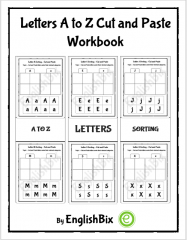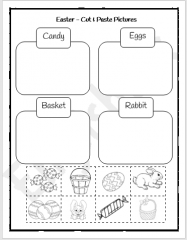Let us understand a very interesting skill which mostly all kids and adults enjoy.
Yes it is cutting skills with the help of Scissor.

Cutting with scissors requires the ability of hand separation while cutting, which is the ability to use your thumb, index, and middle fingers separately from the pinkie and ring fingers. This can be a challenge for a kid with small hands. Although most 3- and 4-year-olds have the necessary sniping and cutting skills, scissors skills are not fully developed until the age of 6. If the skills gets developed and interest is showed at the age of 6 and above then start using his good motor skills by following strategies.
1. Select Good Scissors
Scissors come in a variety of sizes, so look for a pair that fits your child’s hand. For an inexperienced cutter, choose a pair of scissors with a blunt point, and give them a chance to try to make sure the blades are sharp enough to cut. Blurred scissors can fold the paper instead of cutting it.
Children uses left hands should always use the left handed scissor. Scissors at the top of the left hand scissors are on the left side so that children can see the cutting line. Beware of scissors that are supposedly cohesive; although these can easily be held with the left or right hand, the upper blade is still on the right side, which makes it difficult for lefties to see the cutting line.
Children with special needs, hand weakness, or joint problems may need special or flexible scissors to get started, although many are able to progress to a normal scale over time. There are a variety of flexible scissors that work well for children with moderate body weight. One is the spring scissors, which open automatically after the pressure is off. This is helpful for a strong baby or limited concentration.
2. Stress Scissor Safety
As parents we always think that ‘safety scissors’ are the best option for beginners, but often these scissors have dull blades, making them difficult to cut. Children who try too often fail and become discouraged or give up. Instead, have a good pair of scissors for the child to enjoy cutting his or her own thinking.
Scissor safety is critical and should always be emphasized at the beginning of each cutting activity. Welch reveals her two “golden scissors safety rules” for her kindergarten class.
- Sum special scissors are designed to cut paper only. Nothing else! (This includes shirts, crayons, fingers, hair and lips.) If a child feels the need to cut something out of paper, he loses the right to use scissors until he is ready for another opportunity. If the problem remains, then the scissors should be taken away.
- Avoid walking with scissors. Prevent children from walking to class while holding scissors. In an unusual situation where they have to do so, students know that the correct way to hold on is when the blades are closed, holding the end in the hand, forming a fist around the blades, and leaving the handles open. Scissors should be held close to the side of the person as you walk. According to this rule, there is no danger of children walking around opening and closing their blades.
Before teaching your child to use scissors, have him or her participate in some fun activities that will strengthen his or her arm and finger muscles and improve bilateral coordination. Tong activities are a fun way. Ask your child to use kitchen blocks to place small blocks or to move cotton balls from one container to another.
3. Practice Activities to Improve Motor Skills
Let’s jump-start the fine motor skills with the following activities:
- Tear paper into small pieces to improve the ability to use both hands in a coordinated manner.
- Spin a top to exercise the muscles in the thumb, index, and middle finger.
- Punch holes on index cards with a handheld puncher to strengthen the hand muscles and improve bilateral skills.
- Squeeze water out of squirt-toys in the bathtub so hand muscles get a workout.
- Use an eye dropper filled with watercolor paints to challenge fine motor skill.
- Finger puppet play is entertaining and addresses finger isolation and dexterity.
- Place clothespins or kitchen clips on the edge of a paper plate to strengthen small hand and finger muscles and encourage bilateral skills.
4. Practice How to Properly Hold Scissors
Now, we must follow these simple instructions for holding the scissors correctly.
- Position the wrist so that the thumb is turned upward, the thumb joint resting inside the thumb loop.
- Make sure the tip of the middle finger is inside the opposite loop. Some scissors have enough space for the middle and ring fingers to be positioned inside this loop. There may even be adequate space for both fingers.
- Place the index finger outside the loop, in front of the middle finger serving as a “guide.”
- The ring finger and pinkie should be curled into the palm (unless the ring finger is inside the loop with the middle finger).
As soon as your child is able to hold and use the scissors with ease, he is ready to cut himself. They can begin by cutting multi-colored straws into smaller pieces. Insert a colored string or string into those straw pieces to make a bracelet or necklace. When he is able to master, give him inches-wide strips of card stock, building paper, or old file folders to show his more skills.
Following are some cutting activities you can have your kids practice.



